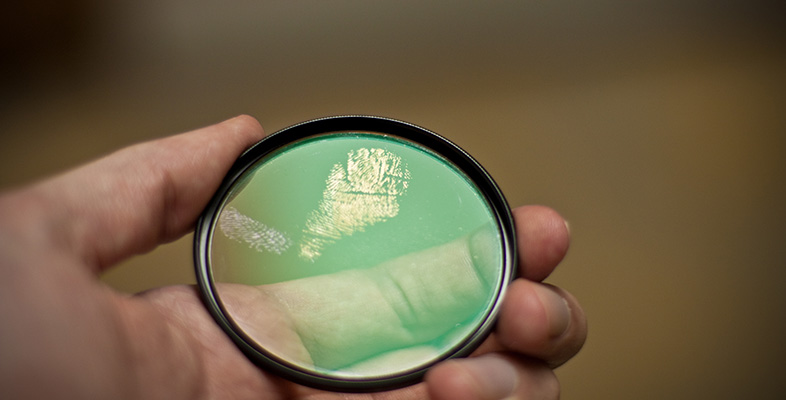Acid-base reactions
Acid-base reactions involve water, H2O. Although most water does exist in this form, a very small proportion of the H2O molecules break up to form ions, i.e. ionise, according to the following chemical equation:

H+ and OHˉ are called ions as they bear an electrical charge. The hydrogen ion, H+ , is positive. The OHˉ ion, called a hydroxide ion, has a negative charge. An acid is a substance that has a greater concentration of hydrogen ions than water. The concentration of hydrogen ions in water is often measured in pH units. On the pH scale, 7 denotes neutral, 0 is very acidic and 14 is very alkaline. An alkali has a greater concentration of OHˉ ions than water.
Question 13
The pH of the fluid in a human stomach varies between about 1 and 4. Is the environment in our stomachs acidic or alkaline?
Answer
The environment in our stomachs is very acidic. Any pH less than 7 is acidic.
Chemical substances called bases can react with acids to form new compounds by neutralising the hydrogen ions. This is called an acid-base reaction. You are probably familiar with the use of the term 'litmus test' to mean a diagnostic test that gives a quick answer. Litmus is a substance that in the presence of acids is red and in the presence of hydroxide ions or bases is blue. So dipping a piece of blotting paper impregnated with litmus into a liquid and seeing whether it turns red or blue can be used as a simple test for an acid or base, but other tests would be needed to identify exactly how acidic or basic, i.e. to determine the pH.
In the same way that litmus changes colour when it comes into contact with acids or bases, other substances can change colour when the pH is changed and this colour change can be used in conjunction with other chemical and biological reagents to give colour tests that are diagnostic for particular biological fluids.
